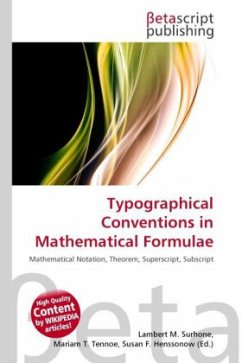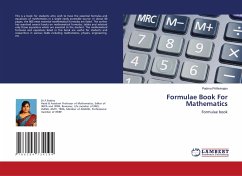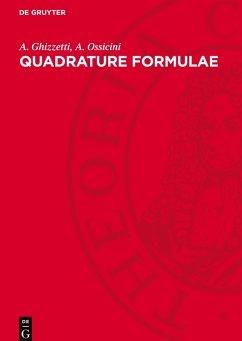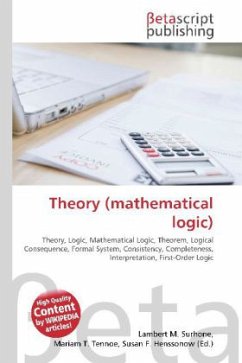
Typographical Conventions in Mathematical Formulae
Versandkostenfrei!
Versandfertig in 6-10 Tagen
30,99 €
inkl. MwSt.

PAYBACK Punkte
15 °P sammeln!
High Quality Content by WIKIPEDIA articles! Typographical conventions in mathematical formulae provide uniformity across mathematical texts and help the readers of those texts to grasp new concepts quickly. Mathematical notation includes letters from various alphabets, as well as special mathematical symbols. Letters in various fonts often have specific, fixed meanings in particular areas of mathematics. A mathematical article or a theorem typically starts from the definitions of the introduced symbols, such as: "Let G(V, E) be a graph with the vertex set V and edge set E...". Theoretically it...
High Quality Content by WIKIPEDIA articles! Typographical conventions in mathematical formulae provide uniformity across mathematical texts and help the readers of those texts to grasp new concepts quickly. Mathematical notation includes letters from various alphabets, as well as special mathematical symbols. Letters in various fonts often have specific, fixed meanings in particular areas of mathematics. A mathematical article or a theorem typically starts from the definitions of the introduced symbols, such as: "Let G(V, E) be a graph with the vertex set V and edge set E...". Theoretically it is admissible to write "Let X(a, q) be a graph with the vertex set a and edge set q..."; however, this would decrease readability, since the reader has to consciously memorize these unusual notations in a limited context.












